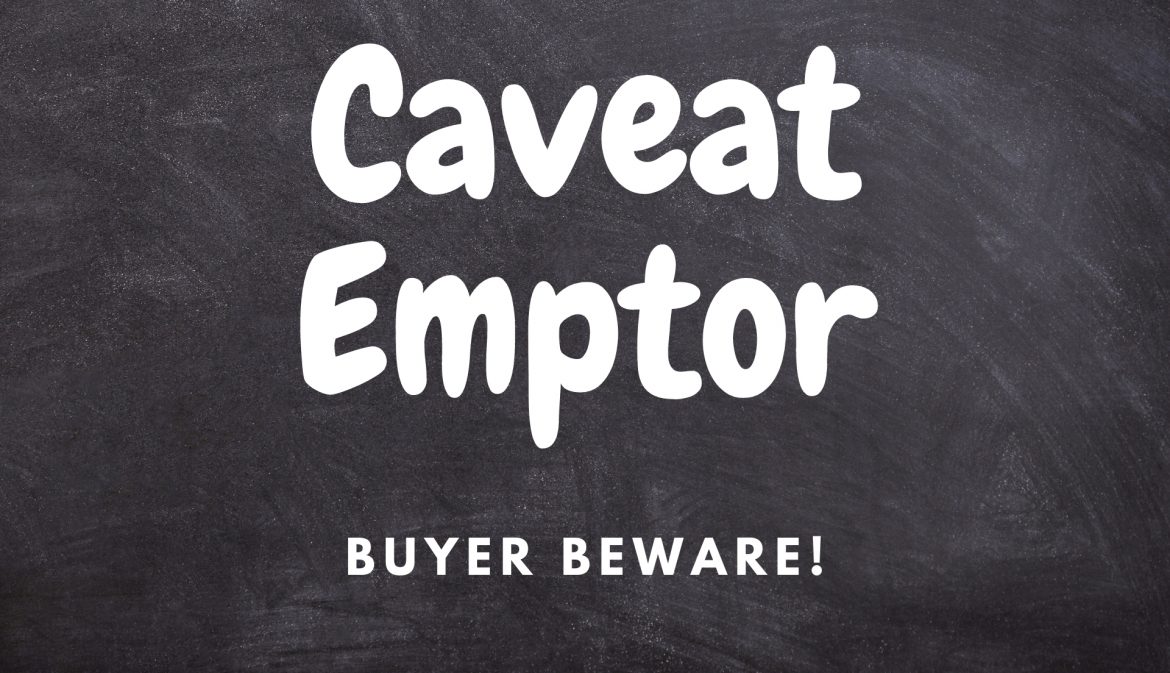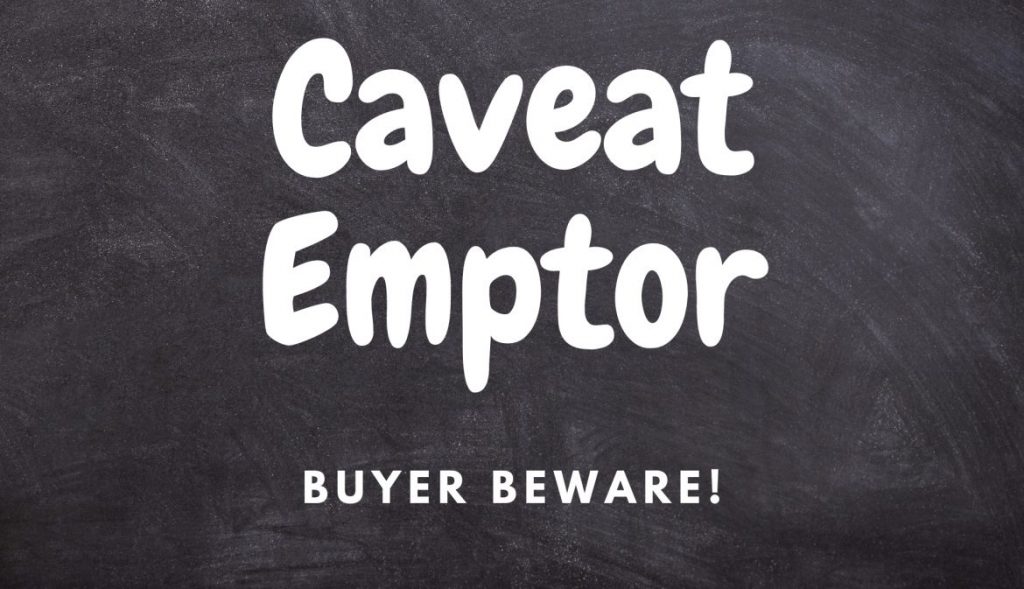In the Financial Marketplace, Let the Buyer Beware!

Caveat emptor. Prudently adhering to the Latin phrase, “Let the buyer beware”, while shopping the financial marketplace will save you both money and disappointment. To meet your long-term objectives, clearly understanding what you’re getting when you purchase a particular investment, product or service is critical. But easy it is not.
There will be financial scams and rip-offs deliberately perpetrated on gullible investors. These can range from the New Era Foundation’s bilking of huge sums from several Pennsylvania colleges, schools, and charities with supposedly sophisticated investment committees to the recently uncovered Omega Trust fraud where thousands of individuals sent millions of dollars in cash for an “investment” promising a 50-1 return on their money in less than a year.
By keeping greed and stupidity in check, these overt ploys can often easily be identified for what they truly are. Far more difficult to discern are the choices of investment products and services offered by legitimate firms and which of these might work best for you. While the dollars lost due to outright financial swindles are large and well-publicized, it probably pales in comparison to the collective cost of investors making inappropriate or inefficient investment decisions. Here are three general precautions you should take to assure your investments are working to your best advantage.
Look Beneath the Covers.
Know the financial foundation of the securities you are investing in. This is particularly important when your investment actually is comprised of multiple securities, as with mutual funds and annuities. For example, at a client’s request, I recently reviewed the spectrum of mutual funds specifically focusing on utility companies. Utility stocks are traditionally viewed as rather stable investments that typically pay higher than average dividends. One of this year’s top performers in the ‘utility fund’ category was the Van Kampen Utility Fund.
Upon closer examination, some of the companies held by that fund were the electric and natural gas utilities you might expect, such as PECO and Enron. But the fund’s second-largest holding was a whopping 7% position in China Telecom, a rather speculative firm pro-viding cellular phone service to several Chinese provinces. While the stock may not necessarily be a bad investment, it certainly is not what many investors would be looking for when choosing to invest in a “utility fund”.
Know the Terms of Your Investment.
Thoroughly understand the ins and outs of any investment you plan to make. At times, investors just may not know how a particular investment vehicle works. For example, Ginnie Mae bonds periodically return portions of invested principal to investors as the underlying mortgages of that bond are repaid. However, you will occasionally hear of investors inadvertently spending these principal distributions because they mistakenly assumed the checks were periodic interest payments.
However, not all mistaken assumptions are simply investor error. It’s prudent to remember that truth in advertising often begins with a small “t” in the financial marketplace. For instance, several recent articles have been written about some investment firms selling high-rate certificates of deposit (CDs) that, at first glance, may appear to mature in one year. In actuality, many of these apparent short-term vehicles are long-term certificates of deposit with a maturity date twenty to thirty years away. Phrases such as, ‘callable after one year’ or ‘yielding 8% the first year’ are used to deceptively market these securities to unsuspecting investors who anticipate they’re the principal will be returned in twelve months. Take the time to read all the fine print and clearly understand the terminology used be-fore making any commitment.
Is this a Proper Fit?
Make sure the investment solution you are considering is the most appropriate choice for your specific need. Many times investment vehicles are ideally suited for one purpose but are marketed for other applications as well. For the individual investor, the result can often be inefficient, if not ineffective, the solution to their problem.
For instance, most annuities have certain tax deferral benefits that can potentially be attractive in the right situation. However, because an annuity has this ‘built-in’ tax benefit, using it as an investment vehicle within your IRA or retirement plan is typically redundant and usually makes little sense. What additional steps can you take?
Think critically.
Yes, you’ve heard it before but ‘if it sounds too good to be true, it usually is’. Ignore the hype and look for the negative side of an investment as well as the potential. Be wary of any investment whose premise is not supported by good business practice or common sense. Likewise, an investment built on a very narrow foundation or based solely on the current tax code is particularly susceptible to downside risk. A prime example is the tax-sheltered limited partnerships that were so popular in the early 1980s.
Do Your Homework.
Contrary to the media ads of several online brokerage firms, investing should not be a ‘hold your breath and jump’ proposition. Thoroughly research whatever investment you are considering. Even more important, understand your financial goals and true risk tolerance. Clearly identify what factors are most critical for your future success. Then make sure your investment portfolio is designed to complement these. Making specific investment decisions without knowing your fundamental objectives is putting the cart before the horse.
Consider a Professional.
As with most projects, there are times when a do-it-yourself approach can work just fine. However, at some point, hiring a professional financial advisor to assist with your financial planning and portfolio management process maybe your best alternative. Your financial well-being should not be a hit or miss proposition. When your situation is of sufficient size, complexity, or importance, working with an expert just makes sense. Assure any advisor you consider has your best interest at heart.
Risk of some sort is an inherent part of any investment decision; from buying Internet IPOs to putting money in a jar. Judiciously determining what risk a particular investment has and whether that risk is appropriate for you will help assure your hard-earned dollars keep working hard for you.



